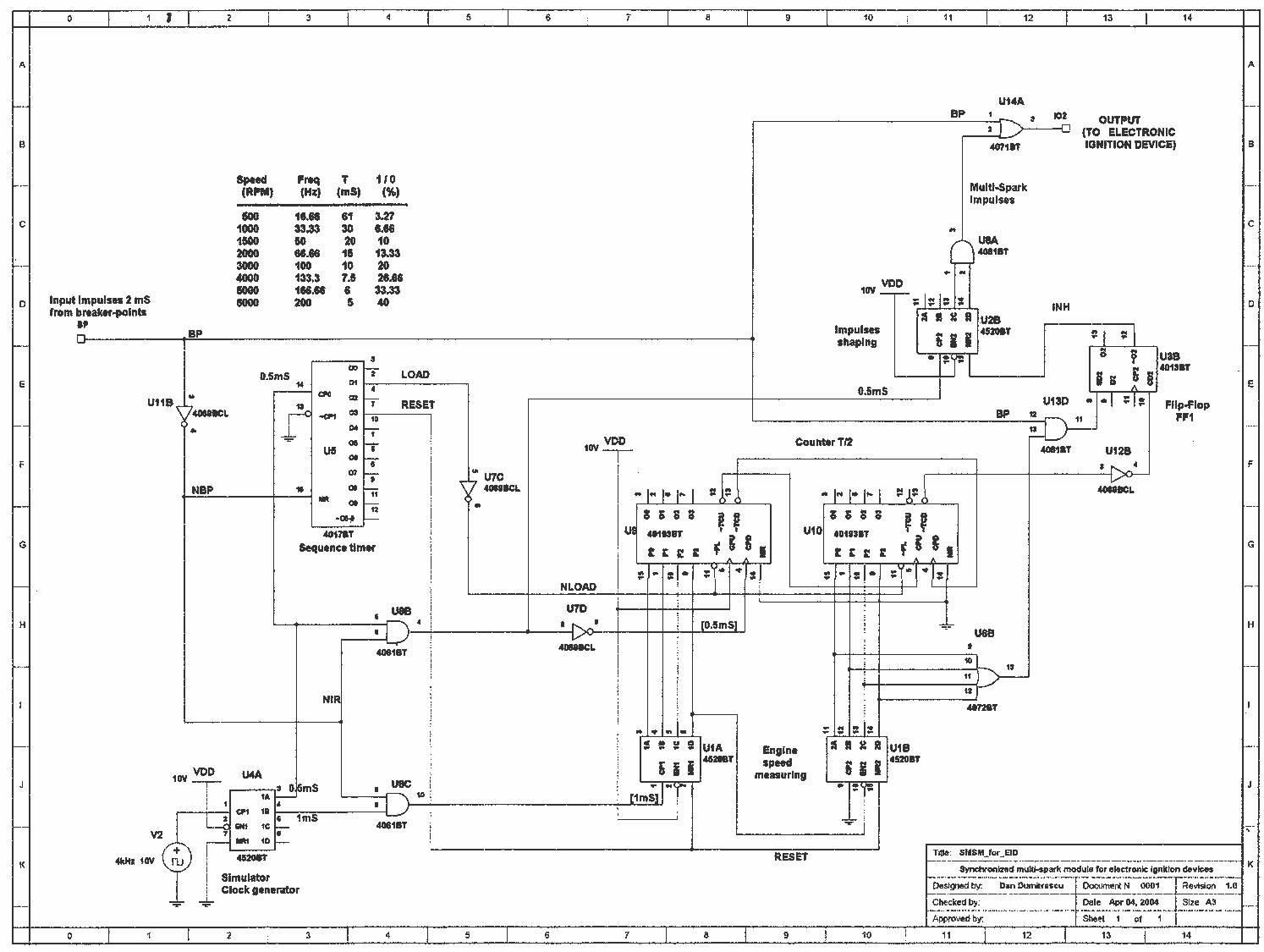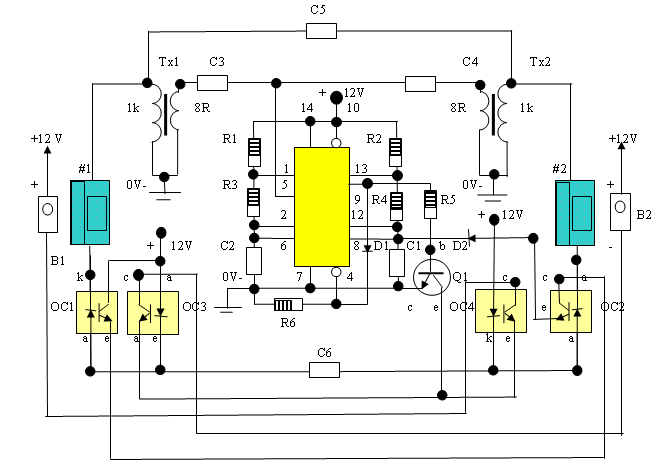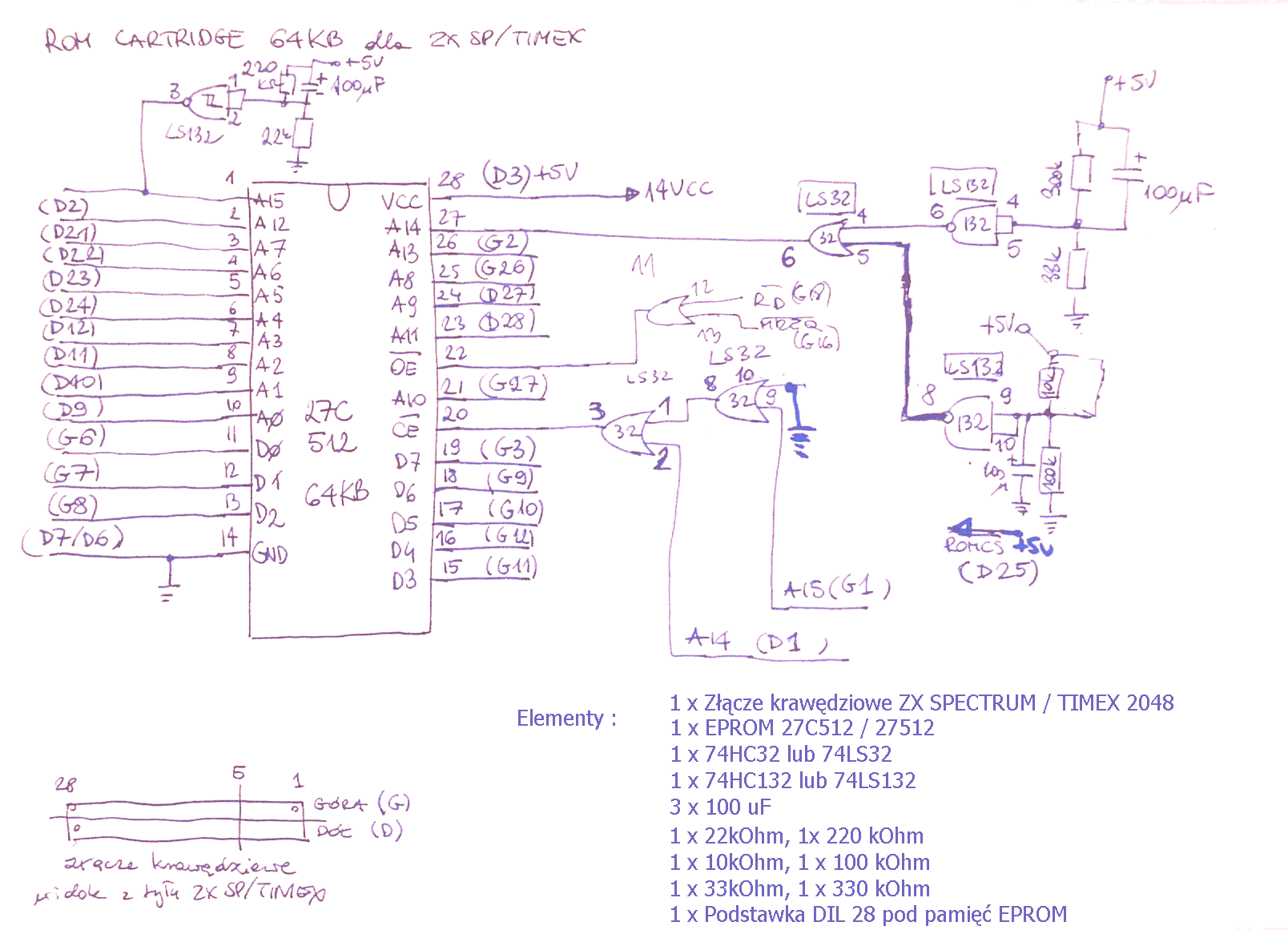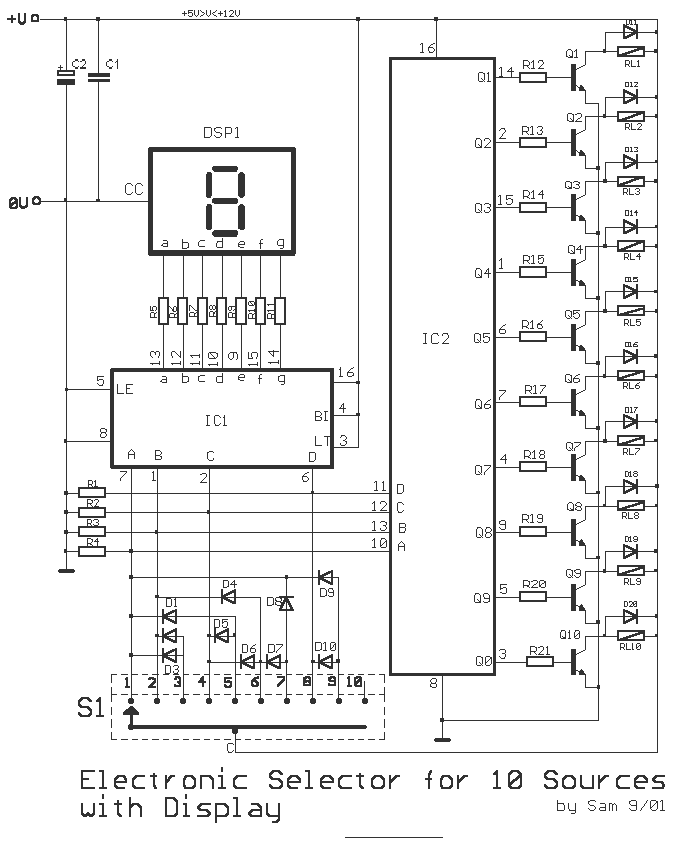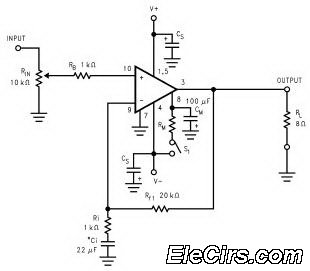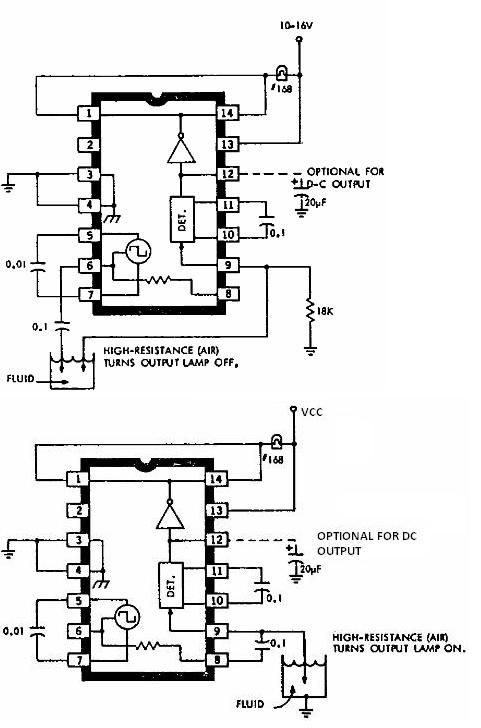
schematics electronic telephone ringer
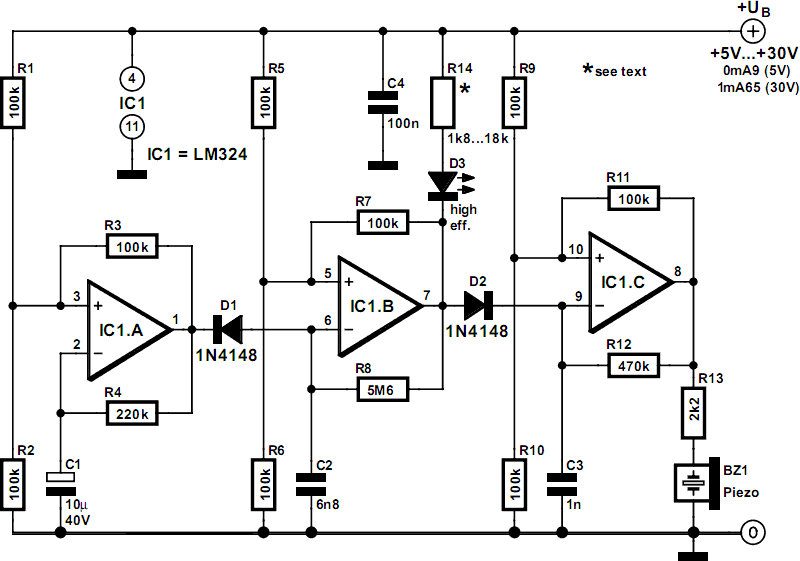
This circuit generates a ringing sound similar to that produced by modern telephones. It comprises three nearly identical oscillators connected in a series configuration, each generating a square wave signal. The frequency of each oscillator is determined by the RC combination: R4 and C1 around IC1.A, R8 and C2 around IC1.B, and R12 and C3 around IC3.C. The pairs of 100 kΩ resistors divide the asymmetric power supply voltage (ranging from 5 V to 30 V) so that, along with the 100 kΩ feedback resistors (R3, R7, and R11), either one-third or two-thirds of the supply voltage is present at the non-inverting inputs of the operational amplifiers. Consequently, the voltage across the capacitor oscillates in a triangular waveform between these two values. The first oscillator operates freely at a frequency of approximately 1/3 Hz. It allows the second oscillator to run only when its output is high, thereby stopping D1 from conducting. The second oscillator operates at a frequency of about 13 Hz, with an optional LED (D3) flashing during its operation. When the output of the second oscillator is low, the third oscillator is permitted to run, producing a frequency of around 1 kHz, which corresponds to the generated tone. The second oscillator is not essential; its purpose is to introduce slight modulation to the 1 kHz tone. A piezo sounder is connected to the output of the third oscillator to convert the electrical signal into an acoustic signal. The circuit's current consumption is just under 1 mA with a 5 V power supply, increasing to approximately 1.65 mA with a supply voltage of 15 V.
The circuit functions as a multi-tone generator, utilizing three oscillators to create a complex audio output. The first oscillator, designed to operate at a low frequency, serves as a trigger for the subsequent oscillators, ensuring a sequential activation that contributes to the overall sound modulation. The second oscillator introduces a modulation effect that enhances the auditory experience by varying the tone slightly, while the third oscillator generates the primary frequency that is perceived as the ringing sound.
Each oscillator's frequency is finely tuned using the associated resistors and capacitors, allowing for precise control over the output sound characteristics. The use of operational amplifiers in conjunction with feedback resistors ensures that the oscillators maintain stability and produce consistent waveforms. The piezo sounder, a crucial component in the circuit, effectively converts the electrical oscillations into sound waves, providing the audible ringing effect.
Power supply considerations are also critical, as the circuit operates efficiently within a specified voltage range. The current consumption is relatively low, making the circuit suitable for battery-powered applications. The design's simplicity and effectiveness in generating a ringing sound make it an excellent choice for various electronic projects requiring sound generation. Overall, this circuit exemplifies a well-structured approach to audio signal generation, combining multiple oscillators to achieve a desired auditory output.This circuit produces a ringing sound similar to that made by more recent telephones. It consists of three almost identical oscillators connected in a chain, each generating a squarewave signal. The frequency of each oscillator depends on the RC combination: R4 and C1 around IC1. A, R8 and C2 around IC1. B and R12 and C3 around IC3. C. The pairs of 1 00 k resistors divide the asymmetric power supply voltage (between 5 V and 30 V) so that, in conjunction with the 100 k feedback resistors (R3, R7 and R11) either one third or two thirds of the supply voltage will be present at the non-inverting inputs to the opamps. The voltage across the capacitor therefore oscillates in a triangle wave between these two values. The first oscillator is free-running at a frequency of approximately 1/3 Hz. Only when its output is high, and D1 stops conducting, can the second oscillator run. The frequency of the second oscillator is about 13 Hz, and optional LED D3 ¬‚ashes when it is running.
When the output of the second oscillator is low, the third is allowed to run. The frequency of the third oscillator is around 1 kHz, and this is the tone that is produced. The second oscillator is not absolutely necessary: its function is just to add a little modulation to the 1 kHz tone. A piezo sounder is connected to the output of the third oscillator to convert the electrical signal into an acoustic one.
The current consumption of the circuit is just under 1mA with a 5V power supply, rising to about 1. 65mA with a supply voltage of 15 V. 🔗 External reference
The circuit functions as a multi-tone generator, utilizing three oscillators to create a complex audio output. The first oscillator, designed to operate at a low frequency, serves as a trigger for the subsequent oscillators, ensuring a sequential activation that contributes to the overall sound modulation. The second oscillator introduces a modulation effect that enhances the auditory experience by varying the tone slightly, while the third oscillator generates the primary frequency that is perceived as the ringing sound.
Each oscillator's frequency is finely tuned using the associated resistors and capacitors, allowing for precise control over the output sound characteristics. The use of operational amplifiers in conjunction with feedback resistors ensures that the oscillators maintain stability and produce consistent waveforms. The piezo sounder, a crucial component in the circuit, effectively converts the electrical oscillations into sound waves, providing the audible ringing effect.
Power supply considerations are also critical, as the circuit operates efficiently within a specified voltage range. The current consumption is relatively low, making the circuit suitable for battery-powered applications. The design's simplicity and effectiveness in generating a ringing sound make it an excellent choice for various electronic projects requiring sound generation. Overall, this circuit exemplifies a well-structured approach to audio signal generation, combining multiple oscillators to achieve a desired auditory output.This circuit produces a ringing sound similar to that made by more recent telephones. It consists of three almost identical oscillators connected in a chain, each generating a squarewave signal. The frequency of each oscillator depends on the RC combination: R4 and C1 around IC1. A, R8 and C2 around IC1. B and R12 and C3 around IC3. C. The pairs of 1 00 k resistors divide the asymmetric power supply voltage (between 5 V and 30 V) so that, in conjunction with the 100 k feedback resistors (R3, R7 and R11) either one third or two thirds of the supply voltage will be present at the non-inverting inputs to the opamps. The voltage across the capacitor therefore oscillates in a triangle wave between these two values. The first oscillator is free-running at a frequency of approximately 1/3 Hz. Only when its output is high, and D1 stops conducting, can the second oscillator run. The frequency of the second oscillator is about 13 Hz, and optional LED D3 ¬‚ashes when it is running.
When the output of the second oscillator is low, the third is allowed to run. The frequency of the third oscillator is around 1 kHz, and this is the tone that is produced. The second oscillator is not absolutely necessary: its function is just to add a little modulation to the 1 kHz tone. A piezo sounder is connected to the output of the third oscillator to convert the electrical signal into an acoustic one.
The current consumption of the circuit is just under 1mA with a 5V power supply, rising to about 1. 65mA with a supply voltage of 15 V. 🔗 External reference
